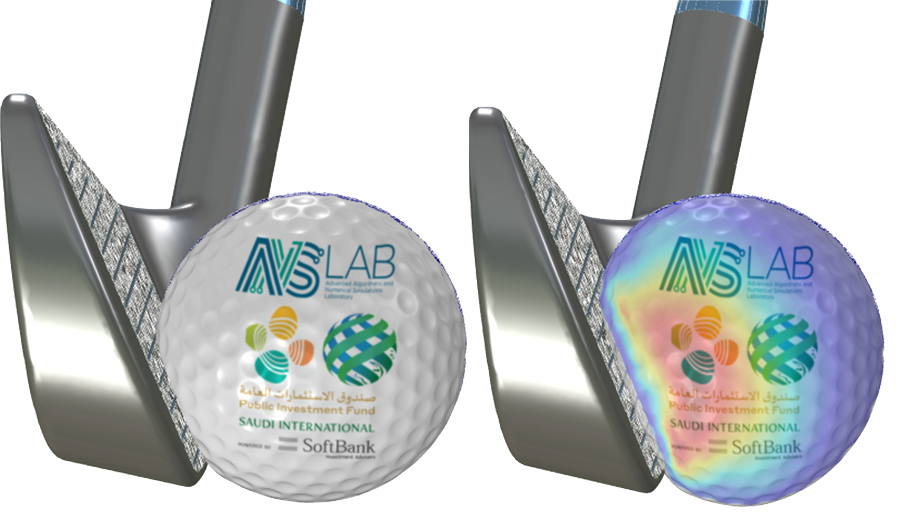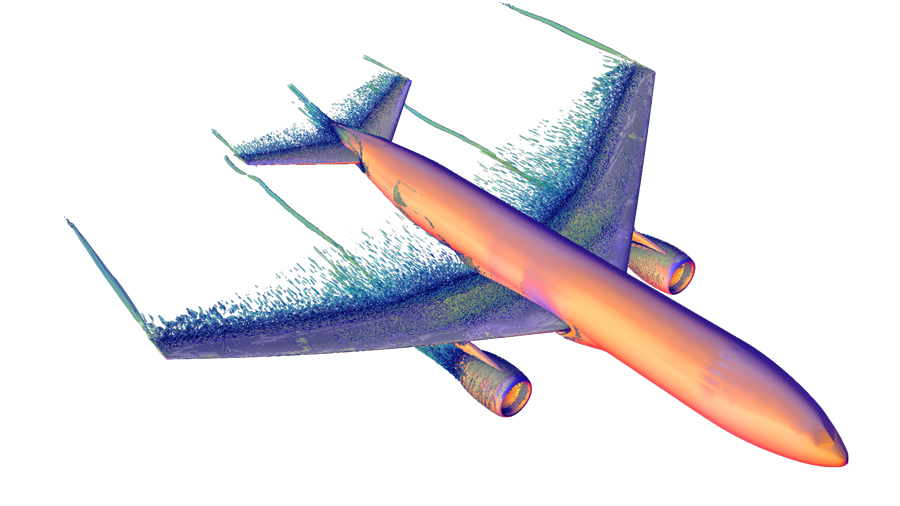- Computational fluid dynamics has seen significant progress over the past decade, but the field is still far from reaching its full potential in many practical applications.
- SSDC, a highly adaptable simulation framework developed by Dr Rasha Al Jahdali and colleagues at King Abdullah University of Science and Technology, Saudi Arabia, could help to overcome some of the main challenges.
- The team tested their framework’s performance by simulating an emerging technique for treating brain tumours using targeted viruses, with promising results.
Computational fluid dynamics (CFD) is a cutting-edge technique that allows scientists to simulate the behaviour of fluids. At its core, CFD uses advanced mathematical algorithms to solve complex equations that govern the flow of fluids. These equations are often deeply intricate, involving multiple variables and interactions that can change rapidly over space and time.

Over the past decade, advances in CFD have seen remarkable progress. New methods have emerged that can compute in a physically consistent and robust fashion the states of a fluid at different times, making simulations significantly more accurate and faster. This approach has been further refined by techniques that dynamically adjust the discrete time steps used in fluid simulations, comparable to the frames in a video. In this way, unnecessary computations can be avoided while ensuring the simulation remains accurate.
Two of the core innovation of SSDC are its provably robustness and ability to adjust its approach in real time, ensuring that its simulations remain both stable and accurate as they progress.
Despite these advances, researchers are still far from unlocking the full potential of CFD in many real-world applications. The challenge lies in bridging the gap between the sophisticated simulations we can run on computers and the often chaotic, complex nature of real-world fluid dynamics. However, a new development at King Abdullah University of Science and Technology (KAUST) might just bring us a step closer to realising this potential.
Introducing SSDC
Through their research, Dr Rasha Al Jahdali and colleagues at KAUST’s Advanced Algorithm and Numerical Simulations Laboratory have developed a new simulation framework called Entropy Stable Entropy Discontinuous Collocated (SSDC). Here, the ‘S’ denotes entropy, a concept from thermodynamics that physicists use to measure disorder in a system.
SSDC was developed in collaboration with industry giants, including NASA, McLaren, E1 Series, Ceer, and Boeing. It combines advanced numerical methods with cutting-edge software that distributes its operations across the memory of multiple computers, stretching its capabilities even further.

(vimeo.com/793812449/370fe6861f).
Two core innovation of SSDC are its provably robustness and ability to adjust its approach in real time, ensuring that its simulations remain both stable and accurate as they progress. This adaptability is especially important when simulating real-world phenomena like compressible fluids (which can change volume under pressure) or electrically conducting fluids (which interact with magnetic fields). These kinds of simulations are notoriously difficult to stabilise and prone to errors, but SSDC’s unique design helps mitigate these issues.
Simulating the spread of epidemics
To test the robustness of their new framework, Al Jahdali’s team put SSDC through a series of rigorous trials. In some of their most recent studies, they aimed to replicate its performance when incorporating ‘parabolic reaction-diffusion’ equations, which are commonly used in epidemiology models to simulate the spread of diseases.
Al Jahdali’s team confirmed SSDC’s ability to accurately simulate the dynamics of tumour growth and its response to virotherapy in the deeply complex environment of the human brain.
In simple terms, reaction-diffusion models combine small-scale interactions – such as infection, recovery, or immunity within a population – with the movement of people across different regions. This allows for accurate simulations of how infectious diseases spread from one area to another.


In real life, practical and ethical considerations mean that epidemiology experiments are often incredibly challenging and sometimes even impossible to implement. In these cases, such simulations can provide vital insights for public health policy. By applying SSDC to these equations, Al Jahdali and colleagues demonstrated its capability to accurately simulate disease spread, offering a powerful tool for understanding and controlling outbreaks.
Simulating virotherapy
But the team didn’t stop at epidemiology. They also applied SSDC’s calculations of parabolic reaction-diffusion equations to an emerging medical technique known as ‘virotherapy’: an innovative treatment that targets brain tumours using viruses that specifically attack cancer cells. While experimental and clinical studies have made significant progress in this field, mathematical models and algorithms can offer deeper insights into the intricate interactions between these ‘oncolytic’ viruses and tumour cells.
Through their tests, Al Jahdali’s team confirmed SSDC’s ability to accurately simulate the dynamics of tumour growth and its response to virotherapy in the deeply complex environment of the human brain. In a medical context, this could provide critical insights into the best possible treatment strategies, tailored to individual patients. Their results suggest that accurate simulations could help optimise virotherapy, potentially reducing the need for more invasive treatments such as chemotherapy or surgery.
The future of SSDC
The success of these tests strengthens the hope among clinicians that virotherapy could soon offer a highly effective alternative cancer treatment. But the potential applications of SSDC extend far beyond this promising result. Based on their success so far, the team is confident that the algorithms presented in their work could be applied to a wide range of other scenarios.

Looking to the future, Al Jahdali and colleagues hope to explore how SSDC could be used for simulating and modelling multi-physics systems governed by partial differential equations in other contexts, providing similarly valuable insights into the behaviour of complex systems across a diverse array of fields. If these future studies see similar levels of success, SSDC could unlock new frontiers in science and engineering.
Ultimately, SSDC represents a significant leap forward in the world of computational fluid dynamics. By bridging the gap between theoretical simulations and practical applications, it offers a glimpse into a future where we can model, understand, and ultimately control some of the most complex systems in nature with unprecedented accuracy and efficiency.

What inspired you to develop SSDC?
SSDC was already developed when I joined the Advanced Algorithm and Numerical Simulations Laboratory (AANSLab) in 2020. My role has been to continue developing SSDC with my colleagues in AANSLab to add novel methods and improve the performance of those available in the SSDC framework.
The inspiration behind the initial development of the SSDC is the need for a next-generation fluid mechanics solver that could accurately capture the intricate dynamics of systems governed by partial differential equations (PDEs). Through my published research articles with my collaborators, we have demonstrated SSDC’s capabilities in this regard, showcasing its high performance and ability to model complex fluid dynamics precisely. The SSDC project is advancing state-of-the-art computational fluid dynamics by creating a powerful and versatile solver that can handle the challenges posed by modern PDEs and dynamic systems to simulate and try to solve real-world problems.
What were the most significant challenges you faced while developing SSDC?
The main challenges were:
1 Come up to speed with the theory behind nonlinear entropy stability to understand how to design new algorithms.
2 The learning curve of SSDC is steep because the framework is built on top of high-performance libraries such as PETSc; therefore, coding in it can be challenging initially. PETSc is the world’s most widely used parallel numerical software library for partial differential equations and sparse matrix computations.
How did SSDC contribute to understanding the interactions between oncolytic viruses and tumour cells?
The algorithms developed and implemented within the SSDC framework produce physically consistent and accurate results without exhibiting scheme-dependent instabilities or converging to unphysical solutions. This gives us confidence that the model captures the nonlinear and often complex interactions between the M1 virus and tumour cells, such as the concentration of the M1 virus at the boundaries of tumour cell pockets and how these evolve over time. The PDE model provides a good representation of the macroscopic-level phenomena occurring in reality.
What are some other applications where you believe SSDC could have an especially transformative impact?
Some other applications where SSDC can have a transformative impact are computational aeroacoustics for both road and flying vehicles and high-speed and very high-speed flows. In particular, we are already collaborating with automotive and aerospace companies.










